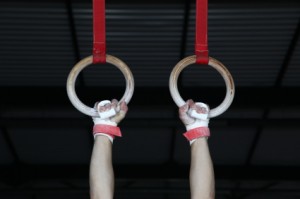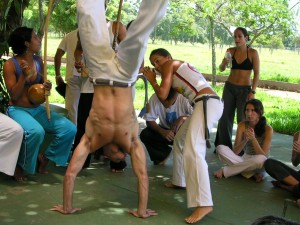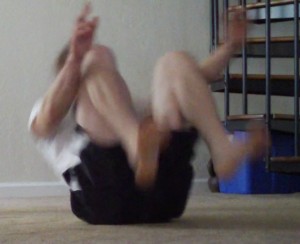It’s the first time I’ve attended a gymnastics class in around two years, maybe longer.
I expect that I’ll be able to get back into it quickly, at least for the most part. I don’t plan to rush things.
On this first day back, we start up on the trampoline. After a few regular bounces and getting use to it I launch into a front flip. Over spun it. Land on my knees. But it was on a trampoline so no harm done. I repeat the process, mostly over spinning it. Eventually I get it down. If you know you’re over spinning every time simply spin less.
Onto some floor exercises. A few basic warmups. I get dizzy from rolling and cartwheels. Then round offs. Those come back as easily as if I’d been doing them regularly. Not perfect but in decent form.
The instructor calls for a front handspring. I think back to what leg I normally go off of. Once I have that no more thoughts. I just run forward plant my hands and land easily on my feet. Once again not perfect but decent. A few more and I’m getting even springier.
We move onto the tumble-trak. A front handspring into a front flip. Here comes a problem. My strong suit in the past was never stringing moves together. I try this again and again but don’t quite get it. I can hit the front handspring but I often hesitate when going for the flip resulting in a landing not on my feet.
Back to the trampoline. Back flips! I hadn’t done one of these in any shape or form in a long, long time, but I suppose that was true of every move on this night. The fear of hurting myself, even on a trampoline, by going backwards was back and prevalent.I start with some basic lead-up drills like rolling over then bouncing over. I feel like my body has lost all control. Like all coordination leaves when I’m upside down. I keep working and I gain the coordination back.
Alright those drills are easy. With a spot on my first backflip I make it easily. From there its easy. Back flips, front flips. I work on them all going back and forth between them. Enjoying the freedom. Enjoying the rush of going upside down. Enjoying being back in gymnastics.
I’ve made the mistake of neglecting much use of the trampoline in the past but will not be making the same mistake this time around. You can read more about that and all kinds of trampoline moves here.
We mess around with some handstand stuff, specifically on press handstands and call it a night.
It was fun. I am definitely re-hooked. I also paid the price.
I knew it would happen. Anytime you engage in a new vigorous physical activity, or one you haven’t done in some time, you will end up sore the next few days. You may not think bouncing on a trampoline or springy floor use much muscle but you’d be wrong. My legs, every inch of them, were sore to the point that walking was a bit awkward.
Despite that I’ll be back soon. And I will also be practicing on my own each day.
Good Luck and Good Gymnastics,
Logan Christopher
P.S. This is day two of the 30 Day Challenge. So far so good. How about you?




 2. The Equipment.
2. The Equipment.






